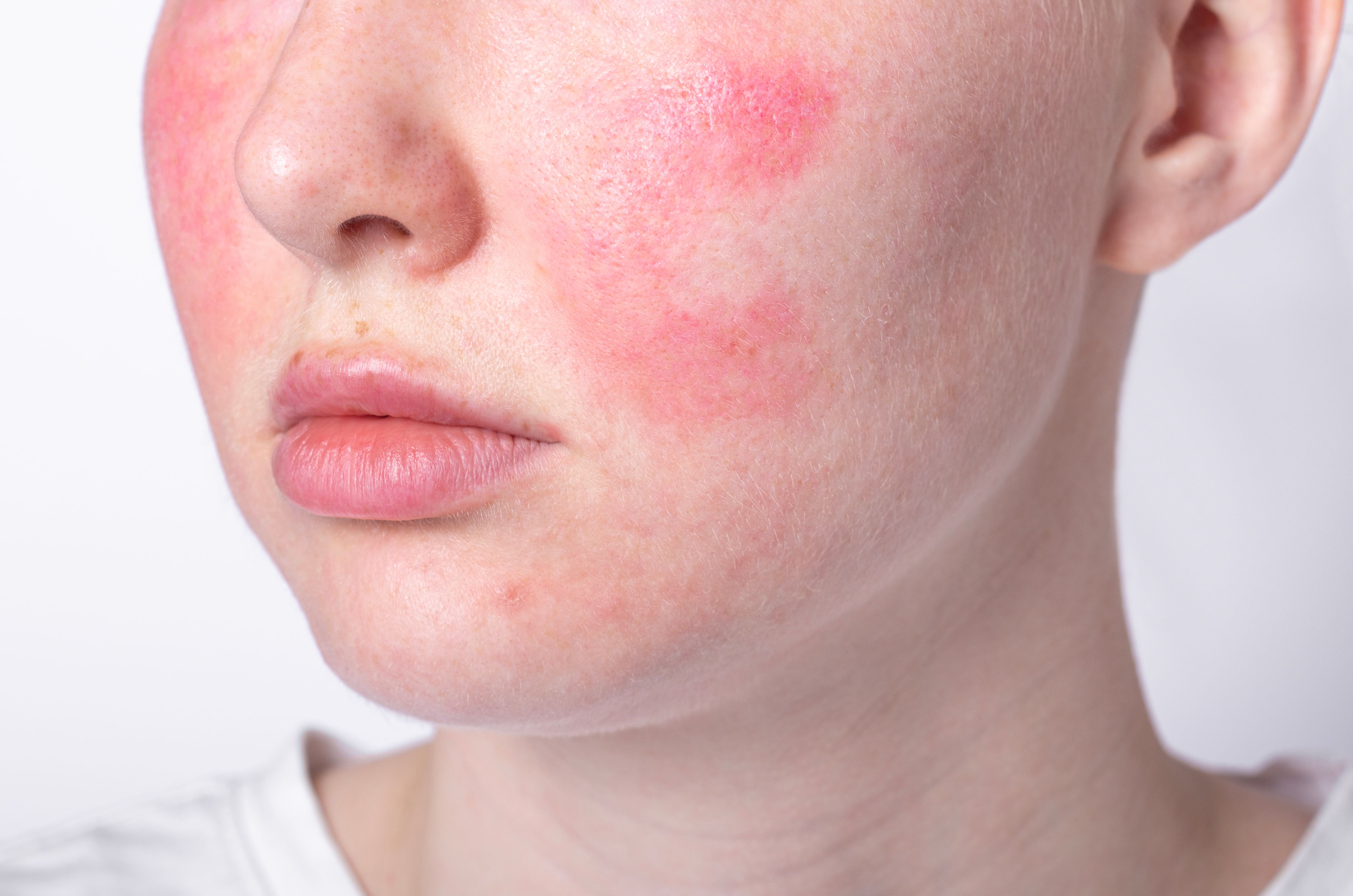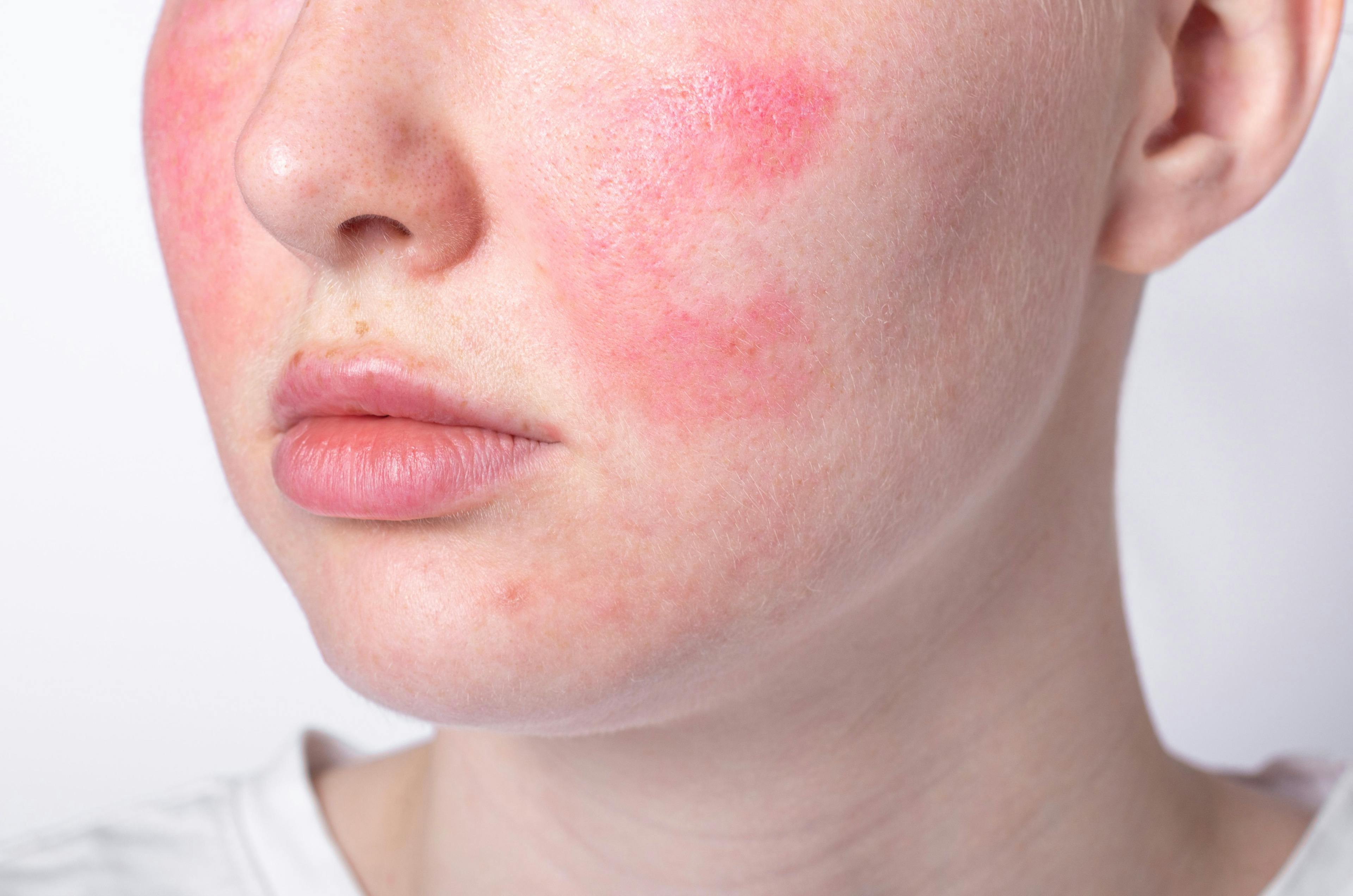- Acne
- Actinic Keratosis
- Aesthetics
- Alopecia
- Atopic Dermatitis
- Buy-and-Bill
- COVID-19
- Case-Based Roundtable
- Chronic Hand Eczema
- Chronic Spontaneous Urticaria
- Drug Watch
- Eczema
- General Dermatology
- Hidradenitis Suppurativa
- Melasma
- NP and PA
- Pediatric Dermatology
- Pigmentary Disorders
- Practice Management
- Precision Medicine and Biologics
- Prurigo Nodularis
- Psoriasis
- Psoriatic Arthritis
- Rare Disease
- Rosacea
- Skin Cancer
- Vitiligo
- Wound Care
Publication
Article
Dermatology Times
Rosacea: Progress, Challenges, and the Road Ahead
Author(s):
Key Takeaways
- Rosacea treatment has evolved from limited options to a broader therapeutic arsenal, including low-dose minocycline and lotilaner.
- Unmet needs in rosacea research include biologic treatments and effective management of persistent redness.
Experts explore how rosacea research is evolving, with new treatments, gaps in care, and a push for more inclusive, targeted approaches.
“We haven’t even gotten close to the kind of genetic phenotyping we see in psoriasis and atopic dermatitis. There is still a lot to learn,” said James Del Rosso, DO, in a recent interview with Dermatology Times on the state of rosacea research. While the exact cause of rosacea remains elusive, advancements in research have significantly improved our understanding of the disease, leading to better management strategies. Experts such as Del Rosso and Zoe Diana Draelos, MD, have contributed extensively to this field, offering insights into emerging therapies, treatment gaps, and the evolving perspective on rosacea pathophysiology.
Image Credit: © iso100production - stock.adobe.com

The Evolution of Treatment
“Rosacea wasn’t really even considered a disease when I started,” recalled Draelos in an interview with Dermatology Times. “With the advent of metronidazole topically in cream, lotion, and gel form, that really put rosacea on the map.” The availability of prescription therapies transformed clinical awareness, leading to a surge in diagnoses and a more structured approach to treatment.
Del Rosso highlights how treatment strategies have expanded beyond just prescription medications. “In the beginning, we had only a few different therapies, such as oral tetracyclines and erythromycin, but we didn’t know a lot about skin care,” he explains. “Now, we understand the importance of skin care in rosacea and being cautious about what you’re doing, including avoiding things that will irritate the skin.”
Emerging Therapies and Innovations
Several new treatments have recently emerged, adding to the therapeutic arsenal against rosacea. One notable advancement is low-dose oral minocycline, which Draelos helped research. “Minocycline was always one of my favorite oral treatments for rosacea, but it’s nice now that it’s low-dose because then you don’t get all the microbial [adverse] effects and resistant organisms, and a lot of the gastrointestinal upset and photosensitivity is reduced,” she explains.1
Another promising development is lotilaner, an eye drop initially approved for treating Demodex blepharitis but showing potential for ocular rosacea.2 “Ocular rosacea is also due to the presence of Demodex in part, and so the new eye drops, I think, will be very helpful in the treatment of ocular rosacea,” Draelos notes.

Additionally, the role of lasers and light-based treatments continues to evolve. While these methods primarily target persistent erythema, their long-term efficacy and optimal use with pharmacological therapies remain areas of active investigation.3 Del Rosso acknowledges that “combination therapy is big in rosacea,” emphasizing the importance of individualized treatment approaches that blend multiple modalities.
Challenges in Management
Despite progress, several unmet needs persist in rosacea research. Del Rosso emphasizes that biologics and advanced targeted therapies lag behind those available for conditions such as psoriasis and atopic dermatitis. “Rosacea, and I’d also say the same thing for acne, has suffered from the issue of not having a lot of advanced treatments targeting specific cytokines or mediators,” he says. “We haven’t had the development of biologic agents that target specific inflammatory pathways the way we do with psoriasis and other inflammatory diseases.”
Draelos identified another pressing challenge: the management of persistent redness. “We’re getting very good at treating the acne component of rosacea, but the redness component was only temporarily addressed by topical agents,” she explains. “We need something that addresses the actual mechanism of action of the disease and not just constricting blood vessels.”

Expanding Research Into Understudied Areas
Rosacea has long been associated with fair-skinned individuals of Northern European descent. However, increasing evidence suggests it can affect all individuals.6 “Rosacea can occur in all Fitzpatrick skin types,” said Draelos. “It was thought to be limited to types I and II, but now we recognize that biracial individuals or those with darker skin can also express rosacea symptoms.”
Del Rosso echoes the need for broader representation in research. “There are more and more people talking about rosacea in people with darker skin and how to recognize it, but I think we still need more efforts to teach clinicians and investigators how to identify and study it in these populations,” he said.
The connection between rosacea and systemic health conditions is another evolving area of interest. Recent studies have suggested a link between rosacea and inflammatory bowel disease (IBD), pointing to the role of the gut-skin axis in disease pathology.7 “Many people feel that the microbiome of the skin, which is rich in Demodex in people with rosacea, contributes to the disease,” said Draelos. “Now we have some evidence that microbiome issues in the gut might lead to IBD and, in turn, predispose people to rosacea.”
The Future of Rosacea Research
While significant strides have been made in the understanding and treatment of rosacea, ongoing research aims to fill the remaining gaps. The increasing focus on personalized medicine, microbiome modulation, and long-term disease progression studies will likely shape future therapeutic approaches.
Del Rosso remains optimistic. “People continue to try, and it may not be just one entity. There may be cases where gut microbiome dysregulation is more of a factor in some individuals, while in others, it’s another pathway. Not everybody is created equal,” he notes.
Additionally, resources such as the National Rosacea Society’s Seal of Acceptance are improving patient education and access to effective skin care.8 “That will help direct rosacea sufferers to products that have been tested in patients with rosacea and have been successfully used,” Draelos explains. “It finally gives a way for people with rosacea to select products appropriate for them.”
Conclusion
The field of rosacea research has advanced significantly over the past few decades, with novel therapeutics, increased awareness, and a growing understanding of the disease’s complexity. However, persistent challenges, including long-term redness management, biologic treatment options, and expanding research into diverse populations remain areas of unmet need. As research continues to evolve, the goal remains clear: to develop more targeted, effective, and lasting treatment options for individuals with rosacea worldwide.
References
- Martins AM, Marto JM, Johnson JL, Graber EM. A review of systemic minocycline side effects and topical minocycline as a safer alternative for treating acne and rosacea. Antibiotics (Basel). 2021;10(7):757. doi:10.3390/antibiotics10070757
- Choe J, Barbieri JS. Emerging medical therapies in rosacea: a narrative review. Dermatol Ther (Heidelb). 2023;13(12):2933-2949. doi:10.1007/s13555-023-01048-
- Chen A, Choi J, Balazic E, Zhu TR, Kobets K. Review of laser and energy-based devices to treat rosacea in skin of color. J Cosmet Laser Ther. 2024;26(1-4):43-53. doi:10.1080/14764172.2024.2376701
- Jackson JM, Kircik LH, Lorenz DJ. Efficacy of extended-release 45 mg oral minocycline and extended-release 45 mg oral minocycline plus 15% azelaic acid in the treatment of acne rosacea. J Drugs Dermatol. 2013;12(3):292-298.
- Gaddie IB, Donnenfeld ED, Karpecki P, et al. Lotilaner ophthalmic solution 0.25% for Demodex blepharitis: randomized, vehicle-controlled, multicenter, phase 3 trial (Saturn-2). Ophthalmology. 2023;130(10):1015-1023. doi:10.1016/j.ophtha.2023.05.030
- Sarkar R, Podder I, Jagadeesan S. Rosacea in skin of color: a comprehensive review. Indian J Dermatol Venereol Leprol. 2020;86(6):611-621. doi:10.4103/ijdvl.IJDVL_769_19
- Wollina U. Is rosacea a systemic disease? Clin Dermatol. 2019;37(6):629-635. doi:10.1016/j.clindermatol.2019.07.032
- National Rosacea Society seal of acceptance. National Rosacea Society. Accessed February 28, 2025. https://www.rosacea.org/seal-of-acceptance/information

Newsletter
Like what you’re reading? Subscribe to Dermatology Times for weekly updates on therapies, innovations, and real-world practice tips.




























